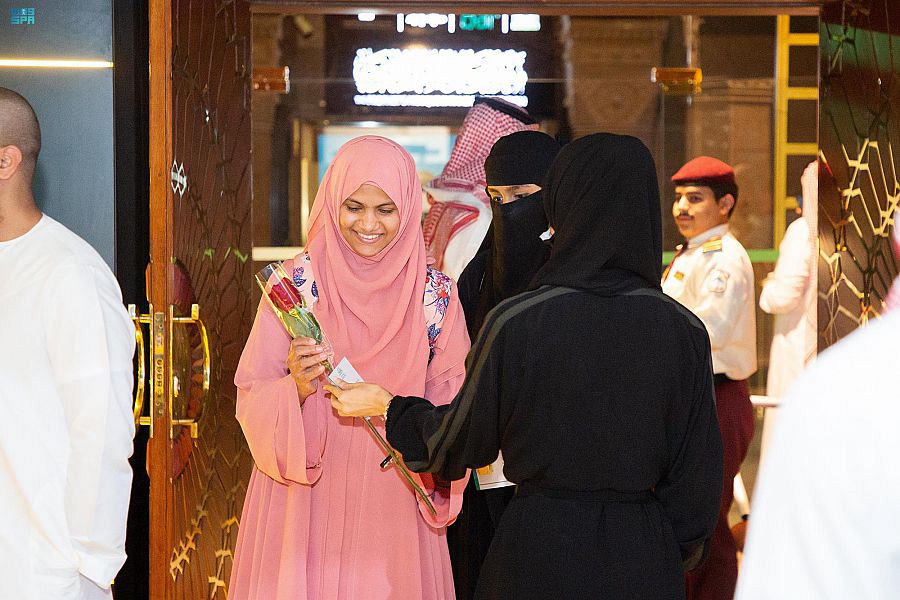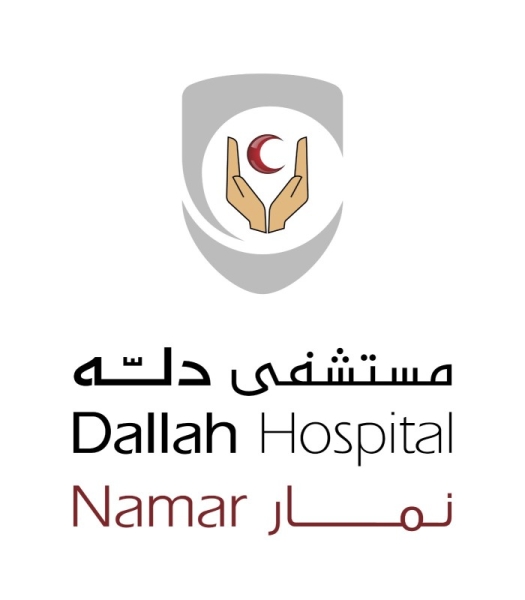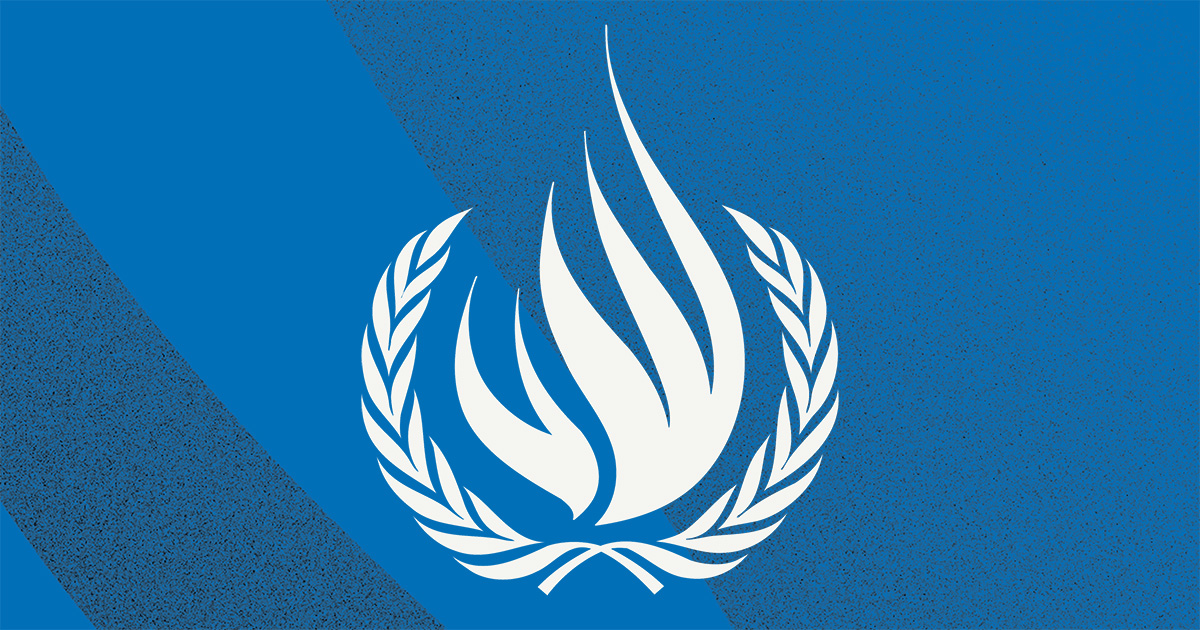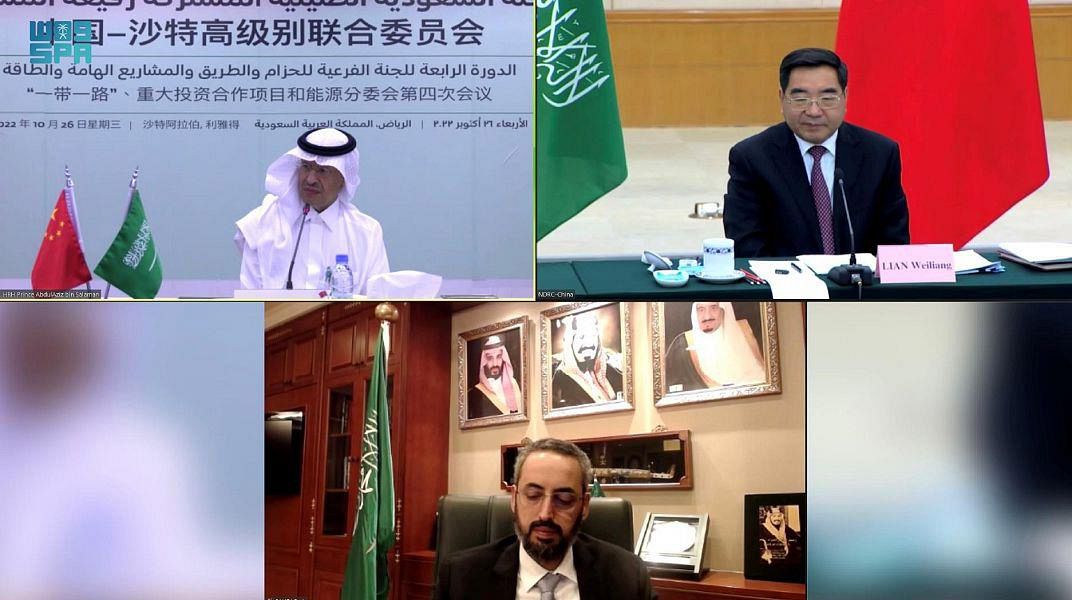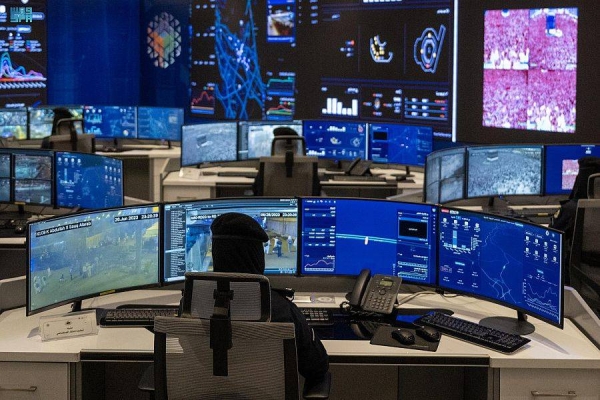
As the annual pilgrimage of Hajj comes to a close on Saturday, more than 1.8 million pilgrims belonging to over 150 countries from all over the world were the major beneficiaries of all the highly advanced technologies and artificial intelligence.
The government of Saudi Arabia tapped the full potential of the new technologies in its drive to further improve the facilities and services being offered to the guests of God. It introduced new technologies apart from updating the earlier ones that facilitated the pilgrims to undertake their lifetime spiritual journey in much easier and comfortable way.
Saudi Arabia harnessed technical capabilities enhanced by a digital infrastructure to provide pioneering services to pilgrims. The Ministry of Hajj and Umrah and the relevant authorities and agencies have improved the services for the guests of God to enable them to perform their rituals easily and comfortably. The digitization of new procedures and technologies and artificial intelligence are the major highlights of this Hajj season.
The ministry has adopted a digital approach to facilitate the movement of pilgrims between the holy sites.
Among the new services introduced for this Hajj in this regard was the self-driving buses. For the first time, the Public Transport Authority launched during this Hajj a series of self-driving electric shuttle buses to transport pilgrims around the city of Makkah. The autonomous vehicles can carry 11 passengers and cover up to 4 km at speeds of up to 30 km per hour for six hours before being recharged. It aimed to provide innovative modern technologies for sustainable and environment-friendly transportation.
The self-driving buses utilize artificial intelligence, cameras, and surrounding sensors to operate without human intervention along a predefined route. They gather information during movement and analyze it to make necessary decisions, aiming to enhance passenger experience and ensure safety.
The updated smart card is among the major new technologies. Many digital services are being provided to the pilgrims through the Nusuk application. On arrival in the Kingdom, foreign pilgrims could simply scan their QR code on this application for getting all the details, including their e-visa. The Nusuk platform had added new services to the Nusuk application, such as the schedule of Jamarat stoning ritual; complaint lodging service; bringing the languages to five after addition of three new languages of French, Turkish, and Urdu to the application; evaluation of services; a map of important sites for pilgrims; pilgrims’ accommodation sites; a package of services for pilgrims at holy sites; communication with the group leader; Hajj awareness guides; pilgrims’ digital card; phone numbers to communicate with Hajj missions of pilgrims, and pilgrims’ health data.
The Nusuk platform is the only electronic platform to apply for domestic pilgrims and it also allows pilgrims coming from Europe, America, Australia and more than 58 countries around the world the ability to register, book, and make electronic payment within easy and convenient electronic procedures.
The Hajj smart card or “ritual card” helps pilgrims to know the details of their journey and provides clear information to teams who assist in case any one of the pilgrims needs help. It enables beneficiaries to be read by smart service devices spread throughout the holy sites, as it contains data related to pilgrims. The card works by means of Near Field Communication (NFC), which is a set of short-range wireless technologies, typically requiring a distance of 4cm or less to initiate a connection.
It contains a barcode, which includes the Hajj data in the event of an accident, so that officials can provide the necessary assistance and inform the Hajj office and the Hajj service provider. The card includes the pilgrim’s health data, personal data and the tawafa office to which the pilgrimage belongs, apart from enabling pilgrims to enter and exit various facilities of the pilgrims’ camps in Makkah. There is a quick response code to help the pilgrim download the QR code application, assisting the pilgrims in going to their place of residence at the holy sites.
The smart bracelet is another feature of technology that provides basic services including full information about the pilgrim, his health status related to measuring blood oxygen levels, heartbeats, and services for requesting security or emergency medical assistance. Awareness messages will be sent to the pilgrims through the bracelet, and other services will be rendered so as to provide them with an easy Hajj experience.
This year, it works with a unique technology to improve the pilgrim’s journey, so that it will be the main factor in using the Mashair Train, as well as in entering and leaving the Grand Mosque to perform tawaf in addition to using an integrated electronic ticketing platform that ensures the provision of a ticketing program.
During this Hajj, the General Presidency for the Affairs of the Two Holy Mosques launched the smart robot to improve the level of services being provided to the pilgrims and worshipers at the Grand Mosque in Makkah and the Prophet’s Mosque in Madinah. The Environmental Protection and Epidemic Control Department at the presidency has deployed robots to support the intensified disinfection operations at the Grand Holy Mosque and its courtyards. The robots use a control system that is programmed on a pre-installed map with six levels that contribute to protecting the environment and analyzing sterilization requirements according to various usage scenarios and courses of sterilization.
There are also robots that distribute bottles of Zamzam water among the pilgrims and visitors. During a tour of approximately 10 minutes, the robot distributes 30 bottles of Zamzam water and can work up to eight hours without any human intervention.
The Saudi Data and Artificial Intelligence Authority (SDAIA) has harnessed its advanced technical efforts including the AI systems to facilitate the procedures for the pilgrims’ arrival into Saudi Arabia to perform the Hajj rituals. Integrated projects were implemented during this year’s Hajj with a number of government agencies in order to facilitate the pilgrims’ trips to Saudi Arabia and to return to their countries safely after the pilgrimage.
SDAIA also continues to provide advanced technical support during the pilgrimage period in the holy sites by providing logistical services that serve the pilgrims, in support of the objectives of the Pilgrim Experience Program, one of the Saudi Vision 2030 programs. The authority, through the National Information Center (NIC), has worked on providing technical support for 15 entry ports in Saudi Arabia, as well as sorting sites and security control centers.
The NIC has also provided systems, services and technical products and raised the level of integration with other government agencies such as the Ministry of Foreign Affairs and the Ministry of Hajj and Umrah. Application developers have contributed to the new wave of technology for the facilitation of performing Hajj rituals. As a result, the team of developers created Wejha, a guidance application available in five languages to help pilgrims to find their way around Makkah by providing 2D and AR maps.
For the safety of pilgrims, SDAIA created a device dedicated to facial identification of visitors, called Banan, which offers hassle-free verification, and authorizes travel records and permits.






